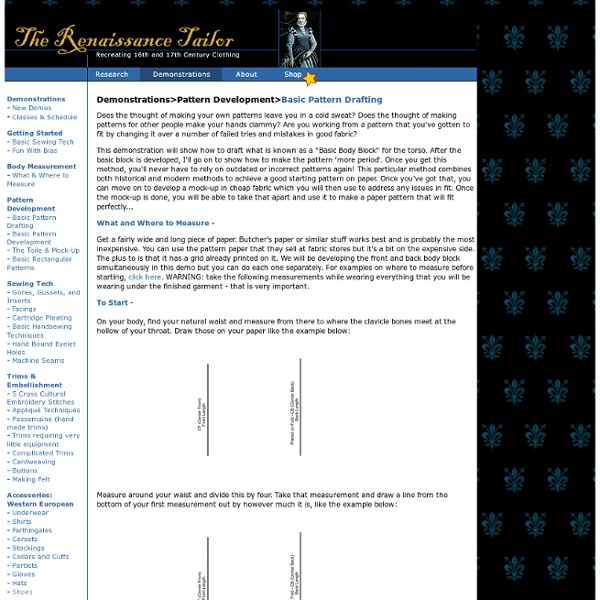Recreating 16th and 17th Century Clothing: The Renaissance Tailo

Elizabethan Costuming Page
Tutorial: Circle Skirts by `taeliac on deviantART
Some Stitches by *AshFantastic on deviantART
Tutorial : Simple Leg Warmers by `taeliac on deviantART
How to Add Ears by ~clearkid
+ Cross Stitching Tutorial + by `RainCookie on deviantART
Ash's Dollie Clothes Tutorial by *AshFantastic on deviantART
sharon b's in a minute ago
I hope you find this needlework dictionary useful and with it able to improve your hand embroidery skills. To assist those who are new to the craft of hand embroidery I have categorised each stitch as to its degree of difficulty. An icon of a single pair of scissors indicates that the stitch is easy to work and you should not hesitate to try it. If you normally have problems following embroidery illustrations the computer can help you. Contents: top Eyelet Stitch Half Chevron stitch Half cross stitch see cross stitch Heavy Braid chain see Heavy chain Heavy chain Herringbone: Herringbone double version 1see Double Herringbone 1 Herringbone double version 2 see Double Herringbone 2 Kensington outline stitch see split stitch Kloster stitch see couching Knot stitch see Bullion knot Knotted stitch see Coral stitch Knotted stitch see French Knot Knotted Cretan: Knotted loop stitch see Basque Knot stitch Knotted Pearl stitch see Reversed Palestrina stitch Vandyke chain stitch see zigzag chain
Related:
Related:



